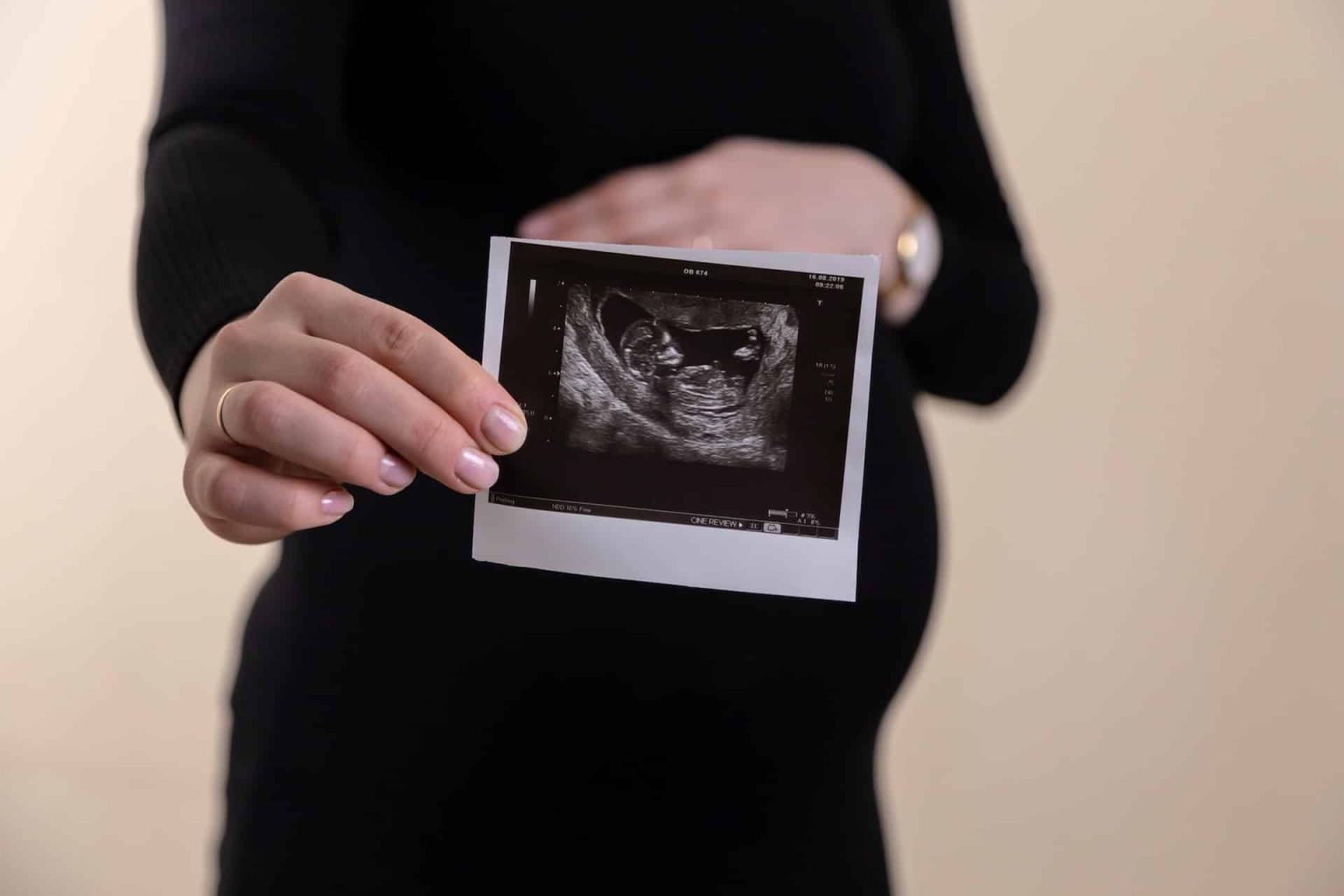Pregnancy and human fetal development begin at the moment of conception. For the next nine months, you and your unborn child will experience fundamental changes. Here is your stage-by-stage guide to fetal development to help you navigate your pregnancy.
FIRST TRIMESTER (one to 13 weeks)
This is a period of rapid growth from a single cell to a recognizable human fetus approximately three inches (7.5 cm) long, made up of billions of cells.
Four weeks: The embryo is just visible.
- Development of the chorionic villi, from which the placenta is formed.
- Production of the hCG hormone (human chorionic gonadotropin), which stops menstruation from occurring.
Five weeks: The beginning of the embryo’s nervous system becomes evident as a ridge of tissue that will develop into the brain and spinal cord.
- Initial formation of the heart with faint beats. The nose and cheeks begin to show under the eyes.
Six weeks: The embryo grows to about 1/3- inch (less than one centimetre).
- The spinal cord, brain, ears and eyes have started to develop.
- The internal organs (lungs, digestive system, kidneys) begin to appear.
- Tiny buds of arms and legs take shape.
Seven weeks: The major organs develop.
- Distinct facial features appear with skin covering the eyes.
- There are now clearly definable arms and legs with the emergence of developing fingers and toes.
- The muscles, bones and blood vessels begin to develop. The heart of the tiny embryo beats rapidly at about 160 beats per minute.
Eight weeks: All the major organs are nearly formed.
- The head is very large in proportion to the body as rapid brain growth occurs.
- The embryo will now make slight movements and is about 3/5-inch (about two centimetres) long.
- The amniotic sac fills about two-thirds of the uterus, sealing in the amniotic fluid which surrounds and protects the unborn infant during pregnancy.
Twelve weeks: The rapidly developing embryo is now called a fetus.
Nine to 13 weeks: By 12 weeks, the fetus is a recognizable human being.
- Although gender was determined at conception, the sex organs begin to differentiate into male or female genital organs. The fetus starts to exercise its muscles.
- By the end of this trimester, the fetus is a tiny but fully-formed human being which is three inches (7.5 cm) long and weighs one ounce.
SECOND TRIMESTER (13 to 26 weeks)
Sixteen weeks: The fetus is very active now. Fine, downy hair begins to grow over the fetus’s delicate, semi-transparent skin.
- Bone and circulatory growth continues rapidly. Fingernails and toenails are present at this stage.
- The external genital organs are fully formed by this time and gender can be clearly distinguished.
Twenty weeks: Fetus swallows amniotic fluid. The kidneys produce fairly large quantities of urine, which is excreted into the amniotic fluid.
- Scalp hair appears.
Twenty-four weeks: At this stage, the fetus is termed viable (able to survive) and weighs about one to one-and-a-half pounds.
- There is very little body fat.
- The skin is wrinkled and covered with a white cheesy substance called vernix this protects and lubricates the delicate skin. It is still there at birth.
- You may now feel the baby’s vigorous movements.
THIRD TRIMESTER (27 to 40 weeks)
Twenty-eight weeks: Your unborn child will spend the next few weeks laying down fat under her skin.
- The body undergoes rapid growth; size becomes more proportionate to her head.
- Hiccuping is common; you experience this as a gently rhythmic sensation.
- The lungs are beginning to function.
Thirty-Two weeks: A baby born at this stage has a good chance of survival with intensive neonatal care.
- The baby weighs about four to four-and a-half pounds.
Thirty-six to 40 weeks: a great deal of fat continues to be laid down.
- Your infants lungs have matured significantly in preparation for survival in the external environment.
- The vernix is shed.
- Your child at this time is fully developed with the characteristic features of the newborn infant.


















